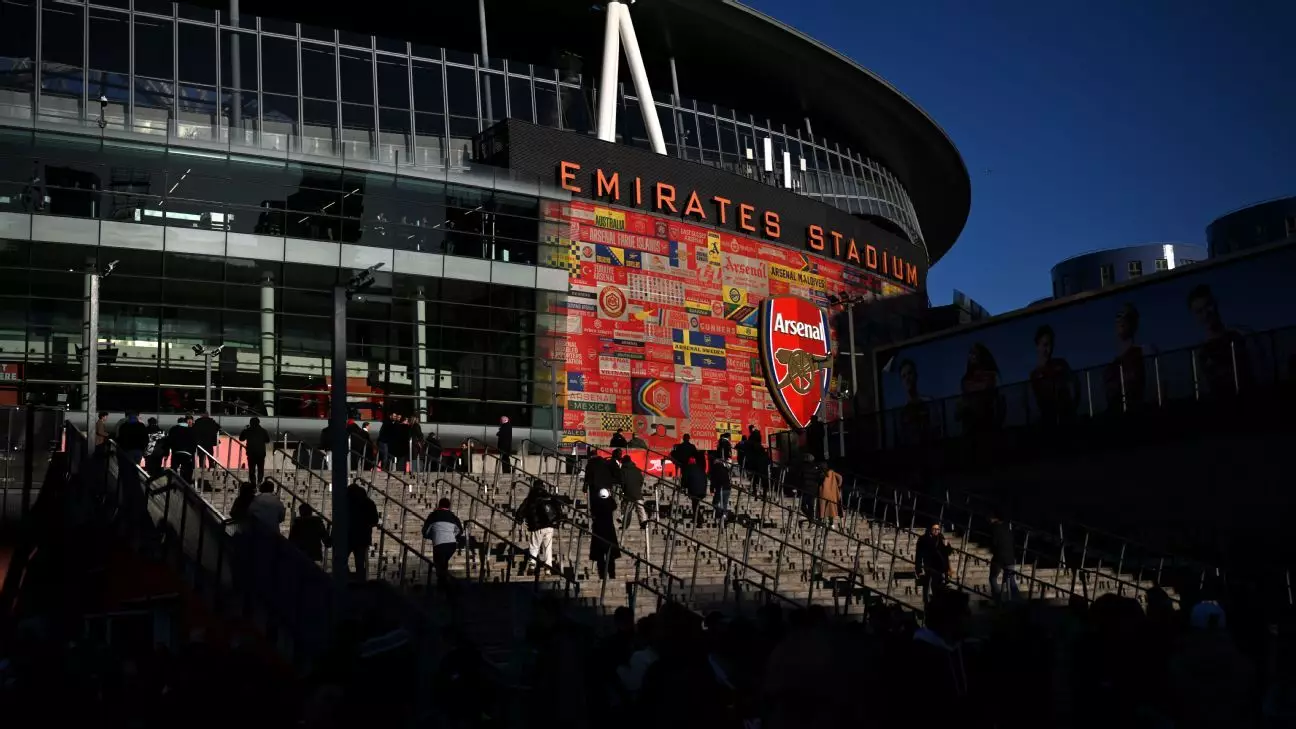Arsenal Football Club has reported a significant financial setback, announcing a loss of £17.7 million ($22.3 million) for the fiscal year ending May 31, 2024. This decline comes despite the club achieving a record revenue of £616.6 million, a substantial increase from the £466.7 million recorded the previous year. A notable portion of this revenue, £52.4 million, originated from player trading activities. This duality of soaring income juxtaposed with financial losses reflects the complex nature of the modern football economy, where success on the pitch does not always translate to financial stability.
One of the highlights of Arsenal’s season was the team’s return to the UEFA Champions League after a six-year absence. The club not only secured a spot in the tournament but also progressed to the quarterfinals, where they faced a formidable Bayern Munich, ultimately losing 3-2 on aggregate. Additionally, the Arsenal Women’s team contributed to the club’s profile with their impressive performances, including a record-setting attendance of 60,160 for a Women’s Super League match against Manchester United held at the Emirates Stadium. These milestones suggest that while financial challenges exist, the club is also experiencing growth in its global brand and fan engagement.
Heightened Wage Bills and Transfer Activities
A remarkable development within the financial accounts was the increase in wage expenditure, which surged from £234.8 million to £327.8 million. This escalation reflects the substantial investments made in player contracts aimed at boosting the squad’s competitiveness. The transfer window was particularly active, with notable signings like Declan Rice for £105 million, Kai Havertz for £67.5 million, and Jurriën Timber for an initial fee of £38 million. These high-profile acquisitions underscore Arsenal’s ambition to strengthen their team, reinforcing Mikel Arteta’s strategy to establish a more competitive side in both domestic and European competitions.
Despite the club’s ambitions illustrated through considerable investments, Arsenal faced criticism for their transfer strategy, especially regarding their decision not to sign a striker during the previous summer and January transfer windows. This reluctance has raised eyebrows, especially in light of a challenging market influenced by UEFA’s Financial Fair Play regulations and the Premier League’s Profit and Sustainability Rules. The club’s net spend from last summer was relatively low at approximately £13 million, which has drawn attention to the balancing act they are attempting between investment and compliance with financial regulations.
Future Outlook and Market Challenges
Looking ahead, Arsenal must navigate a financially strained market where liquidity is dwindling, and budgets are tightening. Their statement regarding the impact of market conditions on profitability reflects broader challenges within the sport, underlining the difficulty in generating funds amidst economic pressures. As the club continues to adapt, the focus will likely be on integrating their financial management strategy with sporting aspirations to foster long-term sustainability. Balancing immediate competitive needs with fiscal responsibility will be crucial in determining Arsenal’s future on and off the pitch.

